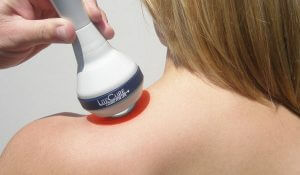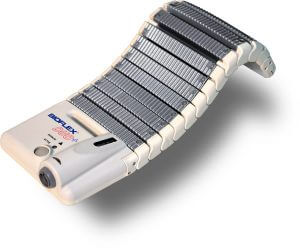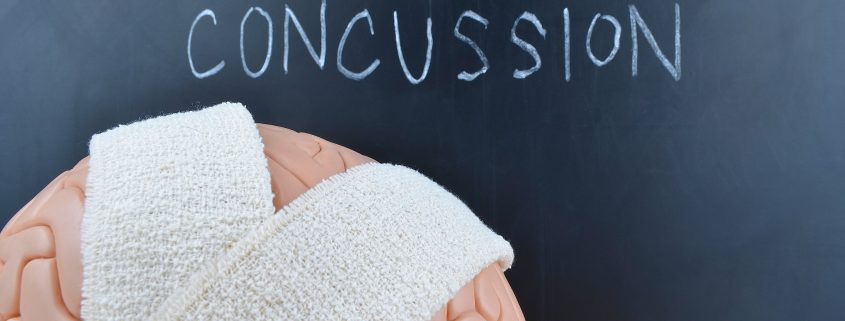Baseline Testing for Concussions
Have you heard about baseline testing for Concussions? It seems to be the latest buzz for athletes involved in contact sport but how does it work, and why is it important?
There has been a surge of research about treating concussions and deciding when to return to play safely, and baseline testing is one tool used to help us to decide. Research shows us that if an athlete returns to play before the brain is fully healed, and gets hit again causing a concussion, it can cause permanent injury to the brain. A second concussion in a short period of time also drastically lengthens the time it takes to recover. In some cases, athletes can have chronic symptoms that can linger for years like headaches, depression, anxiety, and difficulty with short term memory.
It is better to look after the first concussion in order to avoid longstanding problems.
At HCRC we use the IMPACT computerized baseline test, and/or the SCAT5 test. Athletes would come to the clinic once a year before the start of their season to perform one of these tests (the IMACT test if you are over the age of 10, the SCAT5 test if you are 9 and under, or both if you want to be extra safe). This would measure how your brain functions when it is healthy and does not have a concussion. In the unlikely event that you do sustain a concussion, we would redo the same test after your concussion has resolved and before you return to play, to see if your post-concussion test scores match your pre-injury baseline. In some cases, you can feel good and have no symptoms, but still do poorly on the post injury test, which means that your brain is still recovering. In this case the athlete should sit out one more week and then redo the post injury test again, until it matches the baseline.
At HCRC we highly recommend baseline testing for many sports including hockey, lacrosse, soccer, figure skating, rugby, and gymnastics. The testing takes 45 minutes to an hour and is billed as a physiotherapy assessment for your extended health insurance. Give us a call to book your baseline assessment and have peace of mind knowing that you will have one more tool to help you decide when your child is safe to return to play after a concussion.
What is the difference between Class 4 laser and Bioflex laser and when do you choose one over the other?
Laser, or light therapy is a great modality to use for many clinical reasons including reducing pain and swelling, helping tissue heal, and helping improve chronic conditions like arthritis. Light therapy is extremely safe to use. There are no Ultraviolet rays, or radiation involved, only a small bandwidth of light that is helpful for healing tissue. The light radiates into your tissue and saturates your cells with light, giving them an energy boost and helps them to function normally. The treatment is very gentle and comfortable.
At HCRC we are pleased to be able to offer both Class 4 laser services (Litecure) and Bioflex Class 3B laser services. It is fantastic to have both options, as some conditions respond better to Bioflex laser, and others the Class 4 laser. As well, with two patients having the same condition, one may prefer the Bioflex laser, and the other may prefer the Class 4 laser.
 A Class4 laser is more powerful than a Class 3B laser, allowing us to treat an area in a shorter period of time. We would often combine Class 4 laser treatment with your regular physiotherapy treatment if it is felt that you would benefit from both exercise, stretching, and joint mobilization traditionally performed during your physiotherapy treatment and laser treatment.
A Class4 laser is more powerful than a Class 3B laser, allowing us to treat an area in a shorter period of time. We would often combine Class 4 laser treatment with your regular physiotherapy treatment if it is felt that you would benefit from both exercise, stretching, and joint mobilization traditionally performed during your physiotherapy treatment and laser treatment.
We may choose to use the Class 4 laser over the bioflex laser(3B) if there is a smaller area to be treated, or if there are multiple areas that you would like treated all at once (Treatment parameters for the Class 4 laser are one minute per playing card surface area so if you requir treatment for both elbows for example, we could easily do this using the class 4 laser).
 For some conditions, the slower deliverance of light to the injured area can be overall better for healing, so the Bioflex Class 3B laser would be more appropriate. A really acute injury often responds better to Bioflex laser, or on the other spectrum, more chronic arthritic conditions.
For some conditions, the slower deliverance of light to the injured area can be overall better for healing, so the Bioflex Class 3B laser would be more appropriate. A really acute injury often responds better to Bioflex laser, or on the other spectrum, more chronic arthritic conditions.
Treatments are often 30-60 minutes per body part and patients often come for bioflex laser alone until symptoms improve, and then traditional physiotherapy may be added if required.
If you think laser therapy might be something that would help you, give us a call to book your laser assessment and speak to one of our experienced physiotherapists about whether laser can help you. Your first laser treatment is also included in your assessment. We look forward to meeting you.




Leave a Reply
Want to join the discussion?Feel free to contribute!